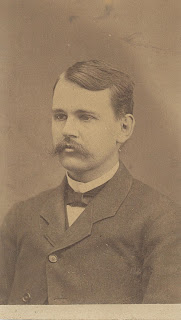 |
||
| This is one of my favorite perpetual calendars. It’s from an 1848 broadside and is owned by the Library of Congress. Click here for close-up views and more information. |
Perpetual calendars may look intimidating at first, but once you get the hang of them they’re a breeze and can actually be a lot of fun (well, perhaps more fun to some folks than others, but I’m quite partial to them). Some perpetual calendars are quite basic, while others (like the one shown above) are a bit more complex. The gist of any perpetual calendar, however, is the simple fact that, because a year may only begin on one of seven weekdays, there are a finite number of configurations any year may have (14, total), but, due to leap years (like 2016), there are still more possibilities than cannot be quickly computed on the fly (although mathematicians, including Alice in Wonderland author, Lewis Carroll, have come up with some fantastic algorithms over the decades to do just that — but we won’t get into that today).
The calendar shown above offers an amazing amount of information on one sheet of paper. Printed in 1848, it includes the dates and days of the week for every year from 1775 to 2025, as well as, at a glance, all the leap years and all the years that share the same configuration within that 250 year time span. How amazing is that?!
But we’re all tired from the holidays and maybe some of us aren’t ready to embrace perpetual calendars as a new hobby for 2016. So, to elicit some calendar fascination for all, here are some interesting factoids about calendars that I find fascinating — and just might make for interesting conversation when you need it:
Did you know?
- Most years begin and end on the same day of the week. If January 1 falls on a Friday, December 31 will, as well. (Leap years, including this year, are the exception. In 2016, 1/1 was a Friday and 12/31 will be a Saturday.)
- We have been using the Gregorian Calendar in the U.S. only since September 14, 1752. The conversion from the Julian Calendar that year eliminated 11 days from our history, sort of — folks here in the Colonies went to bed on September 2, 1752, and woke the next morning on the 14th. Basically, September 3 – 13, 1752, never happened in U.S. history!
- We were late adopters of the Gregorian Calendar. France and Spain made the change in 1582; Catholic states of the Holy Roman Empire did so in 1583, while Protestant states waited until 1700. Sweden, however, was a year later than British Colonies and Russia did not adopt our current calendar until 1918.
- Whatever day of the week is 4/4, so shall be 6/6, 8/8, 10/10, and 12/12. The same is true for 2/2 when NOT a leap year.







